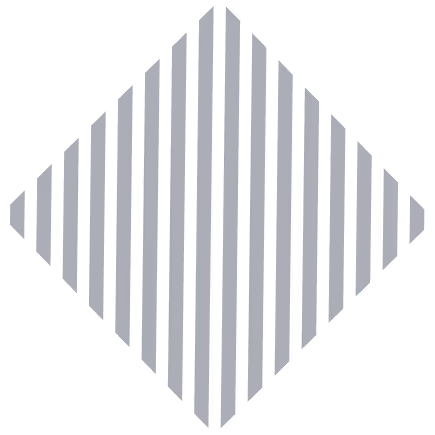AI Hiring Software Comparison: Finding the Best Fit for Your Team

Are you trying to streamline your hiring process but are overwhelmed by the choices out there?
Choosing the right AI hiring software can fast-track your recruitment, make it fairer, and cut down hours of manual work. These tools automate screening, simplify scheduling, and help you reduce bias—all while keeping things moving efficiently.
You need a system that works around the clock, keeps candidates engaged, and fits smoothly into your existing setup. Some platforms automatically score candidates and reduce no-shows by inviting only interested applicants to book interviews.
Tools like HRMLESS use AI to remove the stress from hiring, so you can focus on what matters: finding the right people, faster.
When comparing your options, focus on how each platform delivers on automation, speed, and candidate quality. The right tool will help you screen more applicants, reduce ghosting, and save hours on every hire.
In this blog, we’ll talk about:
- Key features that make AI hiring software efficient and bias-free
- How platforms like HRMLESS help reduce ghosting and speed up recruitment
- What to look for when comparing different AI recruitment tools
Let’s get started!
Key Features of AI Hiring Software
AI hiring software speeds up recruiting and helps you find the best candidates. It automates tasks like screening resumes, ranking applicants, setting interviews, and reducing bias. These tools work around the clock to help you hire faster and smarter.
Resume Screening Automation
Resume screening automation quickly scans and filters hundreds or thousands of resumes. It uses AI to spot key skills, experience, and education based on your job description.
This saves you hours of manual review and ensures you don't miss qualified candidates. The system can also highlight red flags like gaps or mismatched roles. With automation, you spend less time sorting resumes and more time engaging candidates who fit the job.
You can customize filters to focus on what matters most for your role. Automating resume screening sharpens your candidate list and prepares it for the next step.
Candidate Ranking Algorithms
Candidate ranking algorithms score applicants based on how well they match your criteria.
AI evaluates each candidate based on skills, experience, and responses during the application or interview. This helps you prioritize top talent instantly without bias. Rankings update in real time as new candidates apply or their interview data is added.
You can adjust ranking weights according to role priorities. For example:
- Hard skills might weigh more for technical jobs.
- Cultural fit may be key for sales roles.
Ranking algorithms make it easier to spot your strongest candidates.
Interview Scheduling Tools
Interview scheduling tools automate booking interviews with candidates.
Instead of endless email chains, these systems let candidates pick times that work for them. Some platforms, like HRMLESS, integrate directly into calendars and send instant reminders. This reduces no-shows and keeps the process moving.
You can set rules such as buffer times between interviews or limit the number of slots available per day. Automation frees you to focus on speaking with candidates instead of organizing meetings.
By removing manual setup, interview scheduling tools save recruiters up to 2.7 hours per hire.
Bias Mitigation Technology
Bias mitigation technology helps make hiring fairer and more objective.
AI can remove identifying details like names, gender, or photos to reduce unconscious bias in screening. Some tools analyze language or patterns to flag biased job descriptions or interview questions. Algorithms score candidates based only on relevant skills and experience.
By automating this process, you protect diversity goals and reduce hiring mistakes. This helps create a more inclusive candidate pool and improves your company's reputation.
Comparing Top AI Hiring Platforms
Choosing the right AI hiring software means looking at how well it matches your speed, accuracy, and ease of use needs. Different platforms offer features to reduce bias, automate scheduling, and improve candidate engagement. Understanding these details helps you pick the best fit for your hiring process.
Criteria for Evaluating AI Hiring Tools
Choosing the right AI hiring software isn’t just about features; it’s about finding a system that works smarter and faster for your team. Here are the key things to look for:
- Time-Saving Automation: The tool should handle repetitive tasks like resume screening and interview scheduling so your team can focus on top talent—not admin work.
- 24/7 Interview Capability: Look for platforms that allow candidates to complete interviews anytime, helping you keep momentum without delays.
- Bias Reduction: Choose software that avoids traditional resume filters and uses fair, skill-based assessments to surface the best candidates.
- ATS/HRIS Integration: Make sure the tool connects easily with your existing Applicant Tracking System or HR software to eliminate manual data entry and sync workflows.
- Real-Time Analytics: Platforms with analytics dashboards help you track drop-offs, engagement, and hiring speed, so you can fix bottlenecks quickly.
- Automated Candidate Engagement: Features like SMS and email nudges keep applicants in the loop and reduce ghosting by maintaining regular communication.
Overview of Leading Solutions
Top AI hiring platforms run interviews 24/7, rank candidates instantly, and auto-schedule interviews to save time. AI-powered platforms can replace manual steps like resume screening and follow-up, speeding up the hiring cycle.
HRMLESS uses Nerva AI to automate pre-screening, scoring, and scheduling. It reduces ghosting by keeping candidates engaged and ensuring only qualified candidates move forward.
Look for tools that offer multi-channel communication and real-time dashboards. These features let you track your hiring process and spot bottlenecks fast.
Platform-Specific Strengths
Some platforms excel at automation.
Our tool distinguishes by combining AI interviews with scheduling and candidate nudges, which lowers no-shows by 50%. Its system flexes whether you're hiring for two or hundreds of roles, making it easier to scale.
Others focus on candidate quality by using AI to filter out unqualified applicants early. Features like automated scoring help surface top talent instantly. Engagement tools like SMS keep responses timely so you don't lose candidates after hours.
Choose platforms that work with your current ATS to avoid extra work. Those with real-time analytics give you insights to improve hiring speed and reduce bias.
Feature Comparison: HRMLESS vs. Other AI Hiring Platforms
Choosing the right AI hiring software isn’t just about ticking boxes—it’s about what those features actually do for your hiring process. Here’s a quick breakdown to help you evaluate what HRMLESS brings to the table.
Feature
HRMLESS (with Nerva AI)
Standard AI Tools
AI Pre-Screening Interviews
24/7 interviews with real-time scoring
Limited availability or manual setup
Automated Scoring & Ranking
Surface top candidates instantly
Often delayed or lacks customization
Scheduling Automation
Integrated with calendars, sends reminders, lowers no-shows by 50%
Basic tools, manual follow-up required
SMS & Email Engagement
Multi-channel nudges keep candidates engaged
May rely on emails only
Bias Mitigation
AI removes identifying info, flags bias in descriptions
Partial filtering, not always customizable
Real-Time Analytics
Dashboard tracks bottlenecks and time-to-hire
Limited or requires separate tools
ATS & HRIS Integration
Seamlessly integrates with existing systems
Often lacks deep integration
Scalability
Works for 2 to 200+ roles with ease
Performance drops with high-volume hiring
Performance and Accuracy Considerations
When using AI hiring software, you need to know how it evaluates candidates, how well it matches them to your job, and where its predictions might fall short. These factors affect how much you can trust the technology and how it fits your hiring process.
Assessment Methods
AI hiring tools assess candidates in different ways.
Some scan resumes for keywords, while others conduct automated interviews that analyze answers and behavior. Candidates can complete interviews on their own time, reducing scheduling hassles.
Many platforms combine scoring and filtering to highlight top candidates quickly. This helps you focus on qualified talent instead of sorting through every application. Some tools include real-time analytics to show where delays or drop-offs happen in the hiring pipeline.
Accuracy in Candidate Matching
Accuracy depends on the AI's ability to understand job requirements and candidate qualifications.
Better AI systems use multiple data points such as skills, experience, and responses during interviews. This layered approach helps reduce mistakes in matching candidates to roles.
No AI is perfect.
High-quality software, like HRMLESS, uses bias-reducing techniques to avoid unfair filtering. It aims to surface candidates who truly fit your needs by focusing on skill and relevance, not just keywords.
Limitations of AI Predictions
AI predictions are based on data patterns, meaning they can miss unique candidate qualities that don't fit standard profiles. Some candidates perform well on AI assessments but may not be a good cultural fit, and others might have skills that are hard to measure digitally.
Bias in training data can also affect results. While tools like HRMLESS work to minimize this, it's not eliminated. Human judgment is crucial to verifying AI results and making final hiring decisions.
Use AI as a tool to enhance your process, not replace it.
Integration and Usability
When choosing AI hiring software, look for systems that fit with your current tools and are easy to use. You want software that works smoothly with what you already have and keeps the process simple for your team and candidates.
Compatibility with Existing Systems
Your AI hiring software should connect well with your current ATS (Applicant Tracking System) or HRIS (Human Resource Information System). This saves time by syncing candidate data and reducing errors from manual entry.
Most software offers easy integrations. This means no extra work setting things up and no disruption to your workflow. You can use familiar tools while adding AI features for screening and scheduling.
Make sure the platform supports popular calendar apps for automatically scheduling interviews. This will reduce missed appointments and keep things running smoothly.
User Experience Design
Good AI hiring software is simple for both recruiters and candidates.
Candidates should be able to complete interviews anytime, even outside regular work hours, without confusion.
Look for clear interfaces with easy navigation. Features like instant feedback and automatic reminders keep candidates engaged and reduce ghosting. Automated SMS and email nudges help keep communication active.
For recruiters, dashboards should display real-time candidate scores and insights. This makes it quick and easy to spot top talent and move them forward. The goal is to save time without adding extra steps.
Cost and ROI Analysis
Understanding the costs and return on investment can help you decide which AI hiring software best suits your needs. The right solution balances pricing with benefits like saved time, improved candidate quality, and reduced hiring delays.
Pricing Models
AI hiring platforms usually offer subscription plans based on features, number of users, or hires per month. Common plans include:
- Basic: Limited features for small teams or low monthly hires
- Growth: More automation and integrations for mid-sized teams
- Pro/Enterprise: Full access, premium support, and customization
Some platforms charge per interview or candidate screening, which can add up if you hire a lot. Look for a pricing model that fits your hiring volume and needs.
Return on Investment Factors
Your return depends on the time saved and hiring efficiency. Key ROI factors include:
- Reduced time-to-hire: Automation cuts the screening and scheduling steps, speeding decisions and cutting days or weeks off your process.
- Lower operational costs: Less manual work means your team can focus on strategic tasks.
- Higher candidate quality: Automated scoring and pre-screening help you avoid bad hires. Better hires reduce turnover costs.
- Lower no-show rates: Automated reminders and engagement keep candidates on schedule, reducing wasted time and resources.
With HRMLESS, companies report saving over 2.7 hours per hire and cutting ghosting rates by half.
Wrapping It Up
Choosing the right AI hiring software can transform the way you recruit, making it faster, fairer, and far less stressful.
Whether you’re a growing startup or an enterprise team, the right tool will help you reduce ghosting, improve candidate quality, and save hours on every hire. Platforms like HRMLESS offer more than automation—they offer confidence, clarity, and results. With 24/7 AI interviews, automated scoring, and real-time engagement, you’ll never miss out on top talent again.
Hiring doesn’t have to be chaotic.
Kill the chaos with HRMLESS.
Book a demo today and see how AI-led hiring can simplify your process and help you scale without the stress.
Frequently Asked Questions
Still figuring out which AI hiring tool fits your team best? You're not alone. With so many platforms promising automation and speed, it’s normal to have a few lingering questions. Let’s clear them up with some straightforward answers.
What are the top AI recruiting software platforms currently available?
Some leading AI hiring tools offer features like automated interviews, candidate ranking, and scheduling. HRMLESS is one example that runs 24/7 AI-led interviews and streamlines high-volume hiring. Choose platforms that match your company size and hiring volume.
How do AI tools improve the recruitment process?
AI tools reduce time spent on manual tasks. They screen candidates faster, cut bias by standardizing interviews, and immediately help you engage top talent. Automation lowers no-shows and speeds up hiring time.
Can you compare free and paid AI recruitment tools?
Free tools may offer basic resume scanning or limited automation. Paid platforms provide full features like candidate scoring, interview scheduling, and integration with HR systems. Investing in paid software saves you more time and improves candidate quality.
What features should you look for in AI sourcing tools for recruiting?
Look for automated pre-screening, instant candidate ranking, SMS and email engagement, and easy scheduling. Integration with your ATS saves extra work. Analytics dashboards also help track hiring progress and spot bottlenecks.
Which AI recruiting companies offer the best customer support and services?
Customer support varies widely. Companies like HRMLESS focus on user-friendly setup and ongoing help. Look for platforms with responsive teams, clear onboarding, and training resources.
What types of interviews can AI conduct?
AI can handle structured, pre-screening interviews through chat or audio. Some platforms use conversational AI to ask situational or skill-based questions, evaluate tone and context, and score responses, offering a deeper assessment beyond just resumes.
Can AI tools support high-volume hiring?
Absolutely. AI hiring software is built for scale, automating resume screening, scoring, and scheduling across thousands of applicants. This ensures consistent quality and speed, even when filling multiple roles or handling seasonal hiring spikes.
Featured
Subscribe to ournewsletter
Related posts
Explore the world of photography with our curated selection of
portfolio websites that showcase creativity and innovation.





